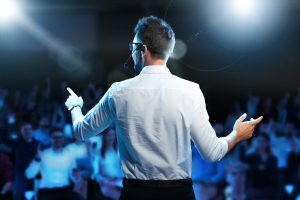How to Create an Effective
Editorial Calendar
The development of sophisticated online algorithms and content creation has revolutionized the way we market to potential and existing consumers. Traditionally, editorial calendars were used by publishing houses to manage and plan the content they were producing.
Companies and marketing agencies also employ the same principles of traditional publishing houses in their content marketing approach. They use editorial calendars to gain new leads and turn them into returning customers.
What is an Editorial Calendar?
An editorial calendar or publishing calendar is a high-level thematic outline of every piece of marketing content you plan to publish. A strong calendar provides a content overview and shows corresponding timelines. It’s typically thought of as a blueprint or road map for your content creation.
An editorial content calendar ensures you will produce regular content that is interesting and dynamic. It helps you control the publishing process by tracking the following:
- Types of content
- Promotional and distribution channels
- Writers assigned to project
- Publishing dates
Why Use an Editorial Calendar?
If you have a lot of content to produce and subsequent distribution to manage, you should be utilizing an editorial calendar. Blog editorial calendars have become increasingly popular in the content marketing realm for their inspirational and pragmatic advantages. A blog content calendar can help you publish blogs in line with global trends, events, company milestones, and integrated marketing campaigns.
Improves Team Management
Instead of haphazardly keeping track via email or on paper, a digital editorial calendar allows everyone to see and comprehend what is happening at all times. This remains a significant advantage, provided that for many employees remote work has become the “new normal.” It enables management to assign tasks to different team members quickly, and fosters a work culture of accountability and transparency.
Streamlines Content Organization and Strategy
After you’ve identified your marketing objectives, you need to strategize what topics your content marketing will cover and the types of content you’re publishing. An editorial calendar provides an excellent overview of your content. A cursory review will point to weeks or months where you might need to adjust your content offering to better align with your marketing goals.
Increases Creativity within Content Production
The sky’s the limit when it comes to generating content. Every so often, you might have content ideas that don’t fit in with the current month’s theme but could work later in the year. Having a robust publishing calendar allows you to organize those ideas for later use. Plus, you can even create sections devoted to collecting brainstorming ideas. This helps to inspire creativity and promotes a diverse content offering.
Maintains Content and Publishing Consistency
The number one rule of content marketing is consistency. With an overview, it’s easy to identify if you’re posting regularly and whether or not there’s an equitable distribution of content material, i.e., blogs versus videos, for example. Having an editorial calendar ensures your content is educational, relevant, and entertaining for your target market.
Editorial Calendar Templates vs. Software
There is a range of content calendar examples and software on the market that vary in complexity and price depending on your needs. These include traditional calendar layouts, spreadsheets, or kanban boards. Templates are relatively easy to develop if your content team is small and/or has a limited budget. If you’re managing a larger team, you might need additional plugins that come with software.
Google
Google provides the option of excel or calendar formats and is free of charge. Its sharing capabilities make it easy for everyone to access. The only downside is that it requires more manual labor because you have to build everything from scratch.
Asana
Asana is a content managing software that allows users to plan and track their content creation. It has a tiered pricing system based on your needs, including a limited free version. One of its notable advantages is that it helps teammates track content according to priority and where it sits in the marketing funnel. In addition, it streamlines the approval process, so there’s no confusion as to what stage of production each content piece is in.
Trello
Like Asana, Trello also has free and premium versions. It uses Kanban boards (a combination of columns and cards) to organize and delegate tasks. Even though it has a calendar option, most who use this application prefer the Kanban method. Also, Trello boards have Dropbox and Google integration which can be implemented to share valuable research with team members.
How to Create an Editorial Calendar
Once you’ve decided on your template and software, you’ll need to populate it with strategic content. Here are a few essential tips to get you started:
Developing Your Template
The type of template you develop depends on the size of your team, budget, and time. The most efficient way is to download templates already available and/or customize your own by cherry-picking the best elements from a variety of editorial calendar examples. It’s important to note that most editorial content calendars are developed yearly.
Planning Your Publishing Schedule
There is no one-size-fits-all solution to publishing schedules. The industry take is that consistency is key, whether it’s publishing every day or once a week. The type of platforms you publish on is also dependent on your product and buyer personas. If you’re trying to reach an older demographic, you might use Facebook, whereas TikTok would fare better if you need to attract younger customers.
Online content marketing relies on insights gathered from data to calculate risks, which is why research plays an integral part in the entire online marketing process.
Filling Your Content Calendar
Your content should be geared toward attracting your target buyer personas during each phase of the customer journey. Using analytics to identify SEO keywords will help your content rank higher on Google. It’s equally helpful to plan thematic content around specific cultural events and dates within the year that are relatable to different buyer personas. It’s also vital you create evergreen content that can drive traffic all year long.
Generally, there are five different types of marketing content:
- Blogs
- Podcasts
- Videos
- Infographics
- Social Media
Each piece of content you make should fulfill a transactional or informational function depending on where it falls within the buyer’s funnel. You’ll also most likely want to include evergreen content that doesn’t date and can be re-shared.
Sample Editorial Calendar
The key component to any editorial calendar is, of course, a daily breakdown of what content will be published when, including who is responsible for creating the content. Detailed content calendars might categorize content according to the buyer’s consideration and display the specific call to action. You can find some excellent examples of sample and template editorial calendars here.
Analyzing & Revising Your Editorial Calendar
Consistent reviewing is important. A strong editorial calendar serves as a goal but also requires flexibility and constant revision. Take heed that global events can affect and shift a calendar’s plan. Sometimes, despite the data, a particular content piece might not do as well as anticipated, or your audience might perceive it in bad taste. This can occur if you auto-publish a piece of content that appears tone-deaf or insensitive to local or world events that are happening at the time.
If you require help with financial marketing or expert advice on ensuring maximum ROI on your marketing, contact LeadJig. We specialize in helping companies boost their brand awareness to improve marketing metrics and gain more leads. Let us aid you in becoming a local industry expert!





